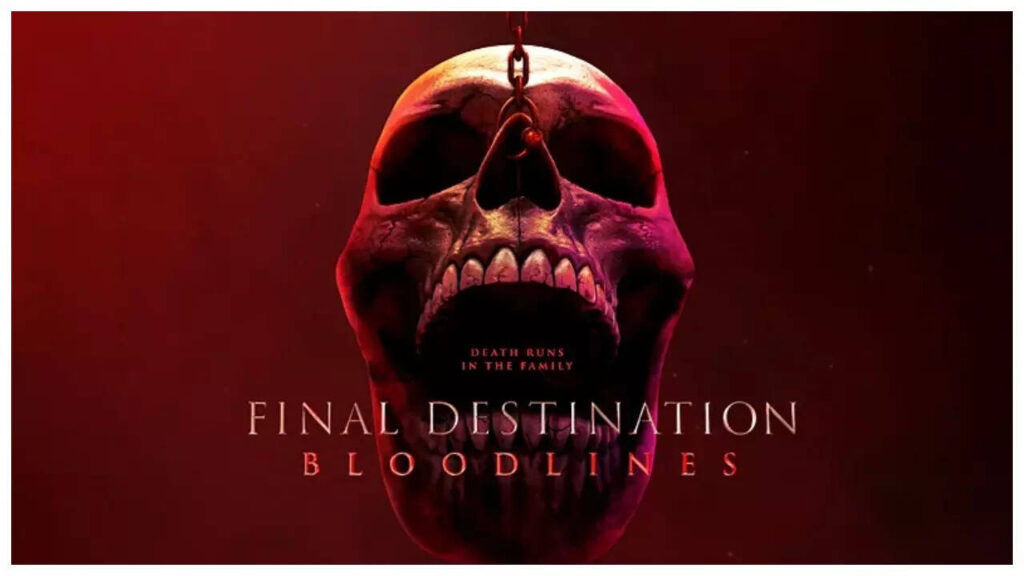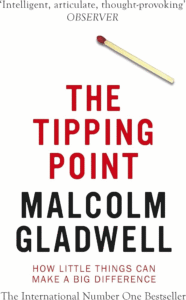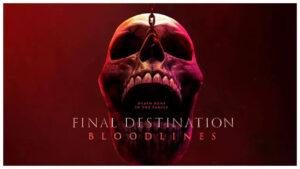The Inexorable Design: An Analysis of Final Destination: Bloodlines
The Final Destination franchise has long cemented its place in horror cinema, not through jump scares or monstrous villains, but through a chilling premise: Death itself is a tangible force, with an intricate design that, once cheated, will inevitably course-correct. With Final Destination: Bloodlines, the latest installment released in May 2025, the series attempts to inject new life into this well-trodden formula, promising a deeper dive into the mechanics of fate and the legacy of its grim reaper. While the core tenets of elaborate, Rube Goldberg-esque death sequences remain, Bloodlinesstrives for a more personal and historically rooted narrative, aiming to elevate the franchise beyond mere spectacle.

Reimagining the Premise: The Familial Curse
Final Destination: Bloodlines distinguishes itself by shifting the focus from random groups of survivors to a specific family targeted by Death. This “bloodlines” twist is the film’s most significant departure, aiming to provide a stronger emotional hook and a more intricate narrative tapestry. Instead of a premonition affecting strangers, a college student, Stefanie, is plagued by a recurring nightmare that reveals a grisly demise awaiting her family, a fate seemingly connected to a past premonition. This narrative choice offers a compelling avenue for exploration: is Death’s design merely about correcting individual escapes, or does it operate on a grander, generational scale, punishing entire lineages for past transgressions or altered fates? This familial connection provides a built-in emotional investment for the audience, as the deaths are no longer just horrific spectacles but tragic losses within a connected unit.
The Spectacle of Death: Elevated and Evolved
True to the franchise’s heritage, Bloodlines delivers a series of meticulously crafted and genuinely shocking death sequences. The film’s strength lies in its ability to transform mundane environments and everyday objects into instruments of gruesome fate. Early reviews and promotional materials highlight the return of the franchise’s signature elaborate traps, with instances involving buses, shattered glass, and even an MRI machine. The success of a Final Destination film often hinges on the creativity and impact of these scenes, and Bloodlines reportedly pushes the boundaries of practical effects and inventive choreography to deliver visceral and unforgettable moments. The tension builds not from anticipating ifsomeone will die, but how and when, turning the ordinary into a suspenseful minefield.
A Glimpse into Death’s Design: Past and Present
Beyond the immediate peril, Bloodlines seeks to deepen the lore of the Final Destination universe. The concept of a “bloodline” implies a historical connection to Death’s intricate web. Early details suggest the film delves into the origins of the curse, taking audiences “back to the very beginning of Death’s twisted sense of justice.” This narrative thread potentially offers insights into why Death pursues specific families or individuals, adding a layer of mythological depth that has often been hinted at but rarely explored in detail in previous installments. The return of veteran actor Tony Todd as William Bludworth, the enigmatic coroner, further strengthens this link to the franchise’s overarching mythology, as his character traditionally serves as a cryptic guide to Death’s rules.
Challenges and Opportunities for the Franchise
While Final Destination: Bloodlines brings a fresh perspective to the series, it also faces inherent challenges. The repetitive nature of Death’s design, where characters repeatedly try and fail to outsmart fate, can lead to a sense of predictability. The film’s success hinges on whether the “bloodlines” aspect and the deeper dive into lore provide enough novelty to overcome this. Furthermore, balancing the visceral horror with genuine emotional resonance for the characters is crucial. The franchise has historically prioritized creative kills over character development, but a familial focus in Bloodlines offers the opportunity for audiences to care more deeply about the victims.
In conclusion, Final Destination: Bloodlines represents a concerted effort to evolve a beloved horror franchise. By introducing a familial curse and exploring the historical underpinnings of Death’s design, the film aims to deliver not just the signature, spectacular deaths, but also a more engaging and emotionally resonant narrative. As audiences continue to be captivated by the chilling inevitability of Death’s pursuit, Bloodlines stands as a testament to the enduring power of its premise, promising a brutal, energetic, and perhaps, surprisingly poignant, return to the world where fate is a force no one can truly escape.











